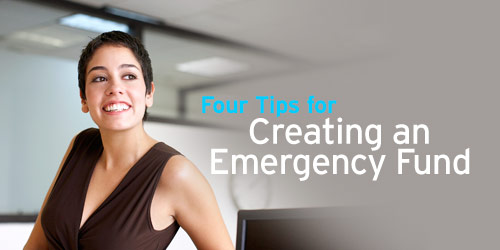Four Tips for Creating an Emergency Fund

With today’s volatile economy, creating an emergency fund isn’t just a good idea, it’s almost a necessity. Currently, 41% of Americans have no emergency savings1, and almost half of workers live paycheck to paycheck just to make ends meet.2

Financial experts recommend having an emergency fund of at least three to six months’ savings. Primerica offers four key tips you can follow to start building a financial safety net.
1. Separate savings. One of the easiest ways families can start an emergency fund is to open a separate savings account or money market fund. Money in this account should not be withdrawn unless a true emergency – such as a major home or car repair, hospital or other large medical bill, etc. – arises.
2. Keep the change. Loose change left over from daily purchases can add up quickly. Make it a habit to save single bills and change and deposit that money into your savings account at the end of each month.
3. Keep paying yourself. As you pay off big debt or credit cards, it’s a good idea to continue to make those same monthly payments – into your savings account!
4. Earn extra cash. Start a part‑time business or work a few hours a week at a second job to beef up an emergency fund. Primerica’s Business Opportunity is a great way to do something enjoyable while padding the bank account. You can work at your own pace, on your own schedule, part-time or full-time!*
Starting an emergency savings account doesn’t have to be complicated. Save what you can and put extra away when you have it. Even starting small can make a big difference in the long run!
*In Canada, the part time option is not available in all jurisdictions and, where it is available, is subject to certain restrictions.
1 Parade, July 13, 2008
2 CNN.com, viewed October 14, 2008
Related
1 Comment
Comments are closed.


On my site, I advocate finding money within your current budget to “pay yourself” If you made coffee at home rather than buying it at the local coffee shop, “pay yourself” that $4 straight in to your savings account.